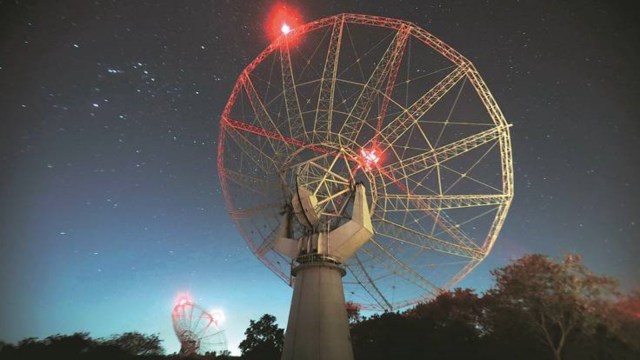Click here to join Express Pune WhatsApp channel and get a curated list of our stories
IUCAA astronomers part of an international team that measured the ‘cosmic dipole effect’
An international study by astronomers, including from Pune-based Inter University Centre for Astronomy and Astrophysics (IUCAA), recently helped measure the ‘cosmic dipole effect’, which makes sources appear brighter in one portion of the sky than the other. “Measuring the dipole is an extremely important test of cosmology, and can tell us whether our fundamental assumptions […]
 Due to its focus on depth rather than sky coverage, many sources in MALS images have been detected for the first time, influencing the dipole measurement. This new survey is the stepping stone for future large scale radio surveys, with the Square Kilometre Array and Deep Synoptic Array, read a statement.
Due to its focus on depth rather than sky coverage, many sources in MALS images have been detected for the first time, influencing the dipole measurement. This new survey is the stepping stone for future large scale radio surveys, with the Square Kilometre Array and Deep Synoptic Array, read a statement.
An international study by astronomers, including from Pune-based Inter University Centre for Astronomy and Astrophysics (IUCAA), recently helped measure the ‘cosmic dipole effect’, which makes sources appear brighter in one portion of the sky than the other.
“Measuring the dipole is an extremely important test of cosmology, and can tell us whether our fundamental assumptions about the structure of the universe are correct,” explains Jonah Wagenveld, astronomer and lead author of the paper that was published in Astronomy and Astrophysics journal.
Professor Neeraj Gupta, principal investigator – MeerKAT Absorption Line Survey (MALS) IUCAA, said while many other measurements in the past 10 years have disagreed with the original measurement, the (MALS) team’s findings are consistent with the prediction, a surprising result in itself.
Using data from the MeerKAT radio telescope, an international team of astronomers from the MeerKAT Absorption Line Survey has released a million source catalog. This is the largest catalog produced by a MeerKAT survey, one of only a handful of radio catalogs with a million or more sources.
To get to these deep images from the large amounts of raw data produced by MeerKAT, a sophisticated processing pipeline and data storage facility has been set up at IUCAA in Pune.
The images and catalogs were further carefully analyzed and prepared for public release at the Max Planck Institute for Radio Astronomy (MPIfR) in Germany. “The depth and the expanse of this continuum catalog holds a unique position among modern radio continuum surveys. The public release will enable the community to address a wide range of issues associated with the evolution of galaxies and the Universe,” says Neeraj Gupta, astronomer at IUCAA and lead investigator of the MALS project.
Due to its focus on depth rather than sky coverage, many sources in MALS images have been detected for the first time, influencing the dipole measurement. This new survey is the stepping stone for future large scale radio surveys, with the Square Kilometre Array and Deep Synoptic Array, read a statement.
Click here to join Express Pune WhatsApp channel and get a curated list of our stories







